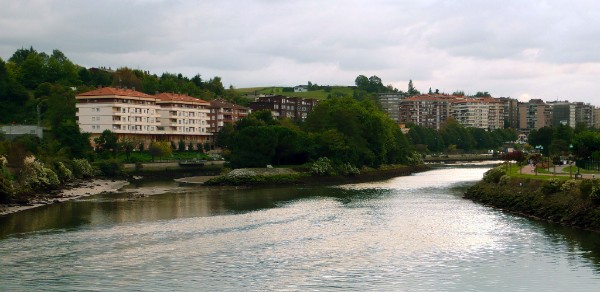How to Take Turns, International Treaty Edition

Pictured above is the Bidasoa, a river which forms much of the northern border between France and Spain. Specifically, the area of the Bidasoa you’re looking at can be found here on a map — it’s near the opening to the Atlantic Ocean’s Bay of Biscay. If you zoom in (or just click here to have that happen automatically), you’ll note that there’s an island in the middle of the river, and if you look again at the picture above, unsurprisingly, you’ll see that island. (Here’s another view of the island which makes its presence more clear.) It’s called Pheasant Island in English, and per the zoomed-in map, the island is currently on the Spanish side of the border.
But it’s not just an island. It’s also a condominium.
No, it’s not a complex of apartments which have some jointly-owned features like a gym, pool, or clubhouse. The word “condominium” has a secondary meaning — a territory over which two nations have joint control. That would suggest that the map linked-to above is slightly wrong — Pheasant Island is clearly shown to be within Spanish territory. But the map is right — or, at least, it is correct as of right now. That’s because Pheasant Island is the world’s only condominium territory which changes sides. Or, as the New York Times explains, it is the only condominium “where sovereignty isn’t shared simultaneously, but alternately. For six months a year, Pheasant Island is French; for the other six, it is Spanish.”
The odd arrangement was born out of the Franco-Spanish War, which ran from 1635 to 1659. To end the hostilities, Kings Louis XIV of France and Philip IV of Spain sent representatives to Pheasant Island to sign what is now known as The Treaty of the Pyrenees. Most likely to make the place a neutral site, the two sides decided (per the treaty) that neither nation would own this tiny river island outright. Why they didn’t share ownership year-round is unknown, but the solution has given us a neat geographic curiosity.
Unfortunately, our curiosity has to end without much further exploration, as the island is off-limit to would-be visitors. You can get pretty close — Pheasant Island is only 150 feet or so from either riverbank, so you can see it from not-too-afar. And you’re not missing much anyway — except for a monument to the Treaty, there’s nothing else on Pheasant Island but a bunch of trees, regardless of which country owns it at the time.
Bonus fact: In a sense, the moon is a condominium — well, in the sense that no nation can claim sovereignty over it. In 1967, the United States, UK, and Soviet Union signed the “Outer Space Treaty” which, among other things, “explicitly forbids any government from claiming a celestial resource such as the Moon or a planet, claiming that they are the common heritage of mankind,” per Wikipedia. More than 100 other nations — including all of them with viable space programs currently — have become signatories to the treaty since.
From the Archives: No Man’s Land: The part of the world that no country wants to own. Also, Long Division: The story of an island divided between two countries, but with a really weird border.
Take the Quiz: Can you name the world’s island nations?
Related: An island you can share with a friend.
